Police Outpost Provincial Park is an Alberta adventure worth discovering! It promises great RV camping. There’s angling for big fish. Add in hiking prairie trails, a dash of history, birdwatching galore – and a whole lot more!
Disclosure: This post contains affiliate links. If you buy something from one of our affiliates, we receive a small commission at no extra charge to you. Thanks for helping to keep our blog up and running!
Table of Contents
The History Behind Alberta’s Police Outpost Provincial Park
In 1970, Alberta’s Police Outpost Provincial Park opened on the shores of Outpost Lake. The area is perfect for camping and has been for hundreds of years. Archaeological studies show that Plains aboriginal people camped at the lake.
In more recent times, whiskey runners passed through bringing illegal goods up from Fort Benton in Montana. Their trade brought about the establishment of a Northwest Mounted Police (NWMP) outpost in the late 1800s.
The NWMP was created in 1873 to give the Northwest Territories – as the western provinces were called – a government presence and to help stop the liquor trade that was creating havoc for many First Nations People. In 1875, the red coats move west into the prairies.
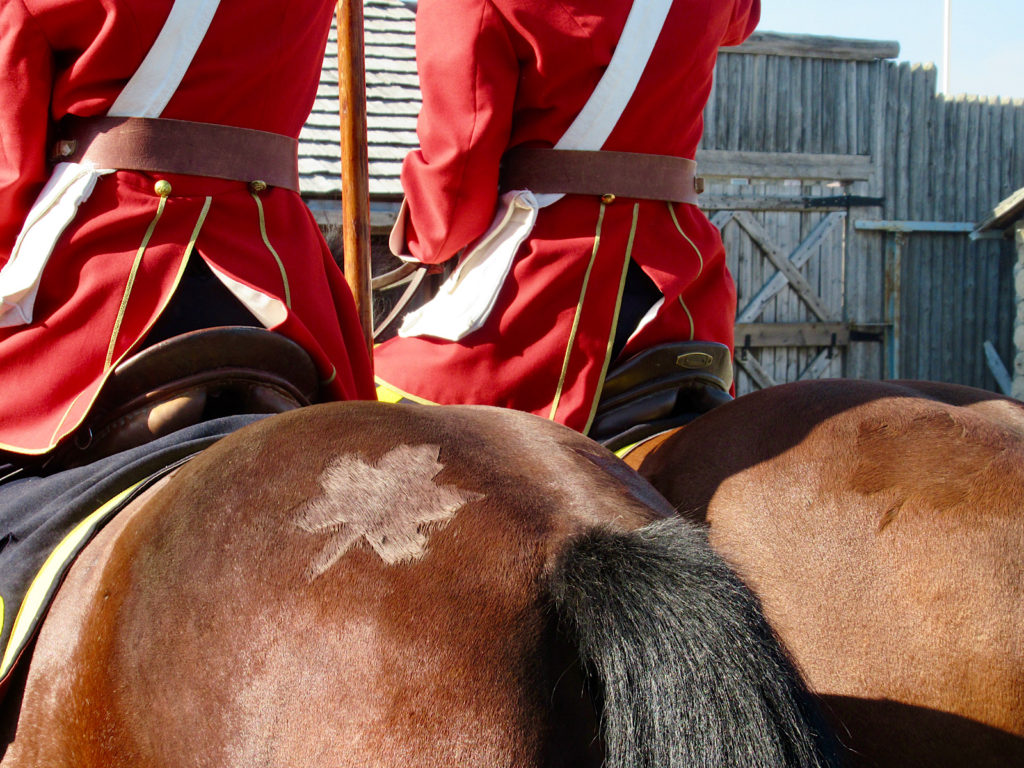
The Mounties developed a system of outposts along the Canada/United States border. In 1891 a small detachment was built on the banks of Boundary Creek neighbouring today’s Police Outpost Provincial Park.
Read more about the NWMP in Western Canada in our post about Fort Walsh National Historic Site on the Alberta/Saskatchewan border.
Under the Watchful Eye of the Chief
Police Outpost Provincial Park sits at an elevation of 1,390 meters (4,560 ft). Towering off in the distance, Chief Mountain (2767 m/9080 ft) sits at the eastern edge of the Rocky Mountains overlooking the prairies below. It is visible from over 160 kilometers (100 mi) away.
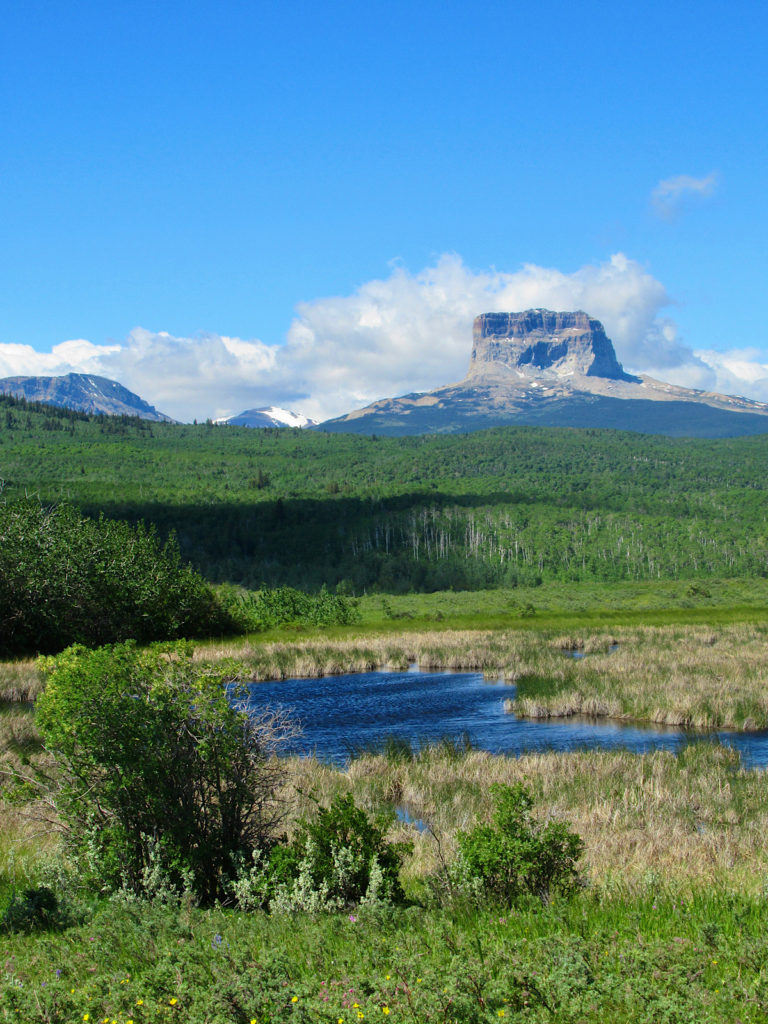
For members of the Blackfoot Confederacy – which includes tribes in Canada and the United States – it is a sacred mountain. Ninaistako is the Blackfoot name for Chief Mountain. It is the Blackfoot home of thunder.
Ninaistako is considered the oldest spirit of any of the mountains. Blackfoot creation stories are linked to it. This peak has been used for millennia for vision quests and other ritual and ceremonial purposes.
Camping at Police Outpost Provincial Park Today
It was less than an hour and a half drive from our home in the Crowsnest Pass to the park (just east of Waterton Lakes National Park). The well-spaced site we’d reserved, tucked in an aspen poplar forest, was perfect for our trailer with room to spare. It had all the accoutrements of your average Alberta campground (pit toilets, campfire pits, picnic tables) – except the water was turned off at the time of our visit. Heads up – pack your own.
There are 46 campsites – 100% reservable – for tent and RV camping from April 1st to October 14th. The campground was less than ½ full when we visited mid-week before school was out for summer. However we learned it fills up when the fish are biting!
Fishing Outpost Lake
The main reason this campground is popular is a big fish tail. No typo. There are big rainbow trout in Outpost Lake. Anglers can only keep one trout over 50 cm (19.7 in). There is also a bait ban. As a result, the fish tails get big! Outpost Lake has become a magnet for serious trout anglers who want to test their skills.
A quick lunch and the guys were ready to fish! They headed out in the boat putting along at much less than the max speed of 12 km/h (7.5 mph). Big Alberta skies shone blue overhead but that was about to change as a thunderstorm rolled through.
Waiting dockside until the skies cleared, we all watched the antics of the red-necked grebes bobbing in the waves with babies on their backs. A muskrat added to the visual entertainment dodging coots and grebes as it hauled a load of green groceries home to the family.
A Birdwatching Haven
As the storm passed, the anglers headed back out to test their skills some more while we birders wandered along the Lake Trail for our own outdoor adventure. Besides camping and fishing, Police Outpost Park and the adjacent Outpost Wetland (along the banks of Boundary Creek) are productive bird habitats.
Species such as Trumpeter swans, black terns, sandhill cranes, American bitterns, common snipes and marsh wrens thrive in the willow thickets, sedge meadows and other patches of vegetation that comprise the wetlands.
We found the mixed woods lakeside to be a cacophony of sound as we meandered along the trail. Red-winged blackbirds competed vocally with each other from the shoreline. Yellow warblers, white-crowned sparrows and house wrens called from the forest. Downy woodpeckers and brown-headed cowbirds flitted from tree to tree.
A Walk in the Woods
My free Merlin Bird ID phone app identified calls from a gray catbird, least flycatcher, red-eyed vireo, northern waterthrush and American goldfinch. We watched a pair of common loons diving offshore while their chicks bobbed along on the surface probably wondering: “Are they coming back up with lunch?”
The trail is a short 2 km (1.2 mi) one-way easy stroll. It ends with short walk across a frost-heaved wooden boardwalk to a small island with benches and lake views – and a massive ant’s nest that had recently been disturbed by… well, I’ll get to that later. Keep reading!
Borderline Adventures
In addition to the Lake Trail – and access trails to and from the campground – Police Outpost also has an excellent loop hike on the Boundary Creek Trail. When winds picked up the following morning, the guys joined us on this short hiking adventure. This 4 km (2.5 mi) trail takes a large loop through the grasslands and hills on the southwestern edge of the park where we watched a female white-tail deer and saw a cow and calf elk in the distance.
We followed the route in a clockwise direction the first time – did it twice to see what we missed going the other way! Took the side trail that led to the Canada/United States border, weaving through the pass-through gate on the barbed wire fence to the old border marker and red, white and blue warning sign with a surveillance camera complete with antenna – hope no one was actually listening!
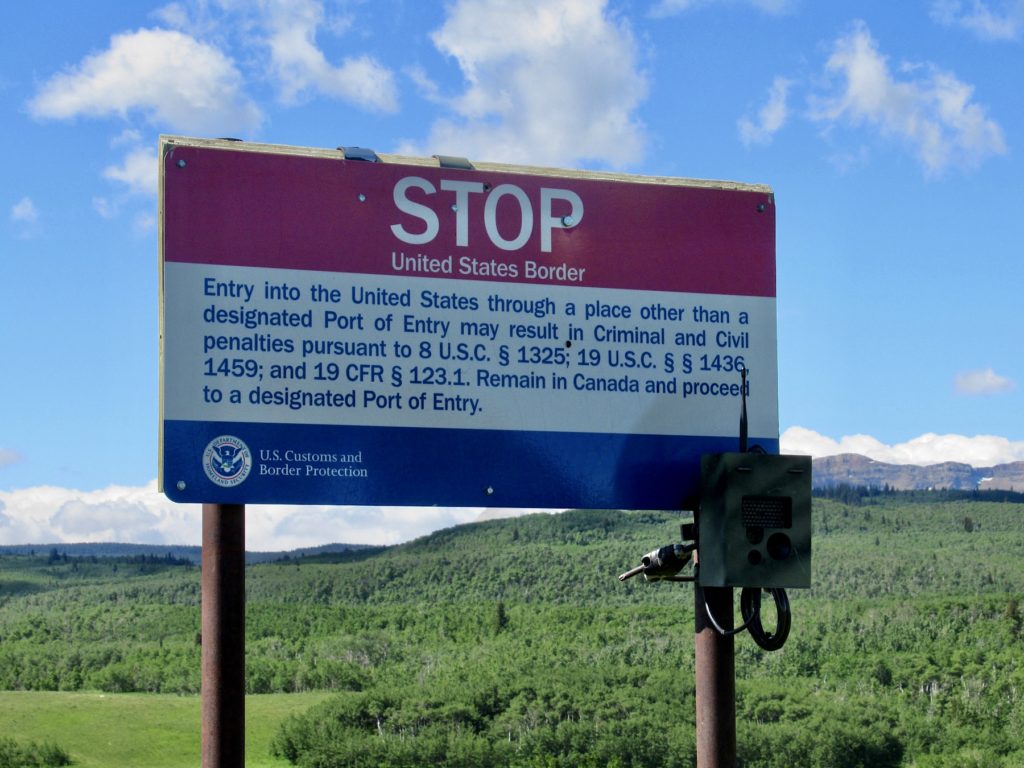
Sitting on the metal memorial bench, we used binos to watch a pair of Trumpeter swans and their five cygnets – big family – across the lake.
Back in the Park
Once again hiking the loop, we followed the trail above the wetlands where snipes were winnowing and another group of subadult swans were swimming. No sign of the cranes, even though we’d heard them in the morning from camp. A marsh hawk (aka Northern harrier) and an osprey flew past.
Another short offshoot takes hikers up to a low summit with spectacular views of Chief and other mountains in Glacier and Waterton Lakes National Parks.
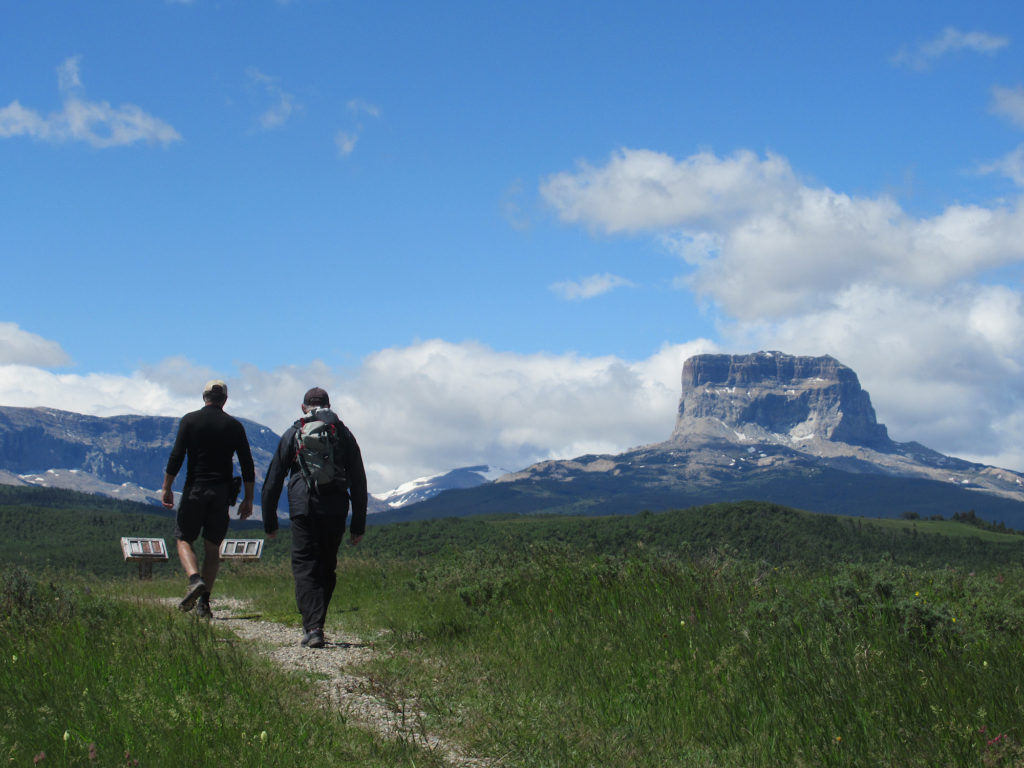
Wolf willow scented the air. Sticky purple geraniums and blue lupines blazed across the slopes. A savannah sparrow sang sweetly while a clay-coloured sparrow buzzed from low Saskatoon bushes on the hillside overlooking Outpost Lake.
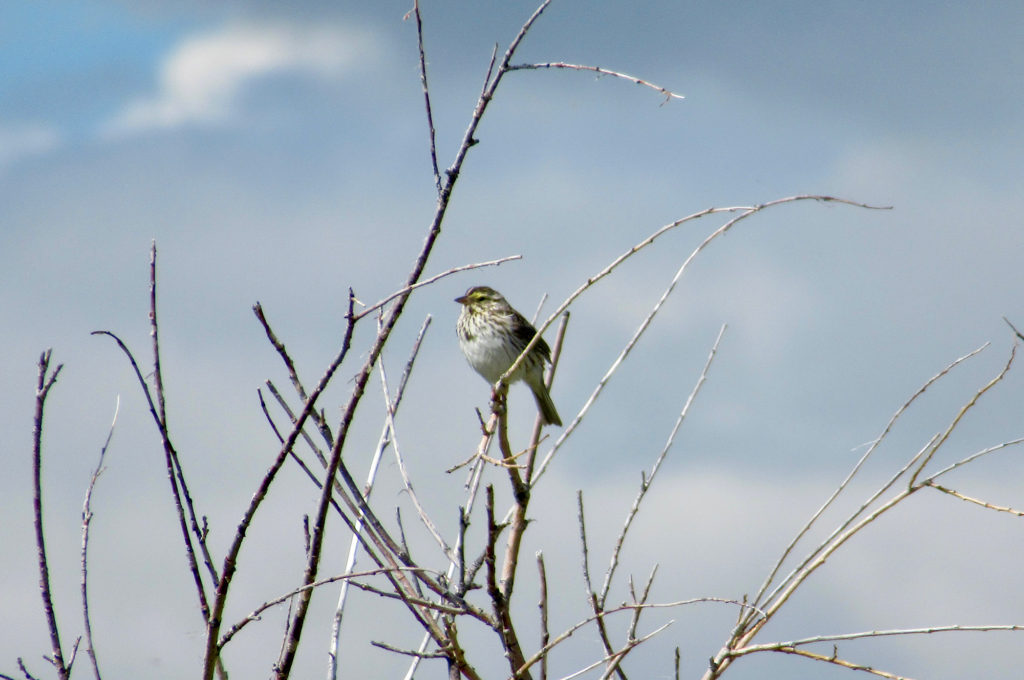
Wildlife Sightings in Police Outpost Provincial Park
Back in camp for the night, we were enjoying appetizers around the campfire when our friend looks up and exclaims: “Did you see that?”
Turning around quickly we saw the bushes beside the entrance to our site sway slightly, but we missed the weasel hauling a squirrel in its mouth as it raced back to home.
I can just hear it now: “Look honey, I’ve got dinner – and it’s fresh!”
We moved our birthday dinner feast into our trailer as the wind picked up. Enjoying the last bites of a barbequed meal, we spotted a blonde-coloured black bear sauntering towards the entrance of our friend’s campsite.
“Hey-yah, get out of here bear!”
It took off running.
I guess now we all know who tore up that ant’s nest on the island!
We’ve had our fair share of Alberta adventures over the years, but these campsite sightings were something else. This Alberta campground has everything you want – and maybe a bit more!
When You Go
Police Outpost Provincial Park is located 10 km (6.2 mi) south and 23 km (14.3 mi) west of Cardston on Highway 2.
Camping reservations are required and can be made online through the Alberta Parks website.
Be sure to pick up bear spray – and other camping goods – at MEC.
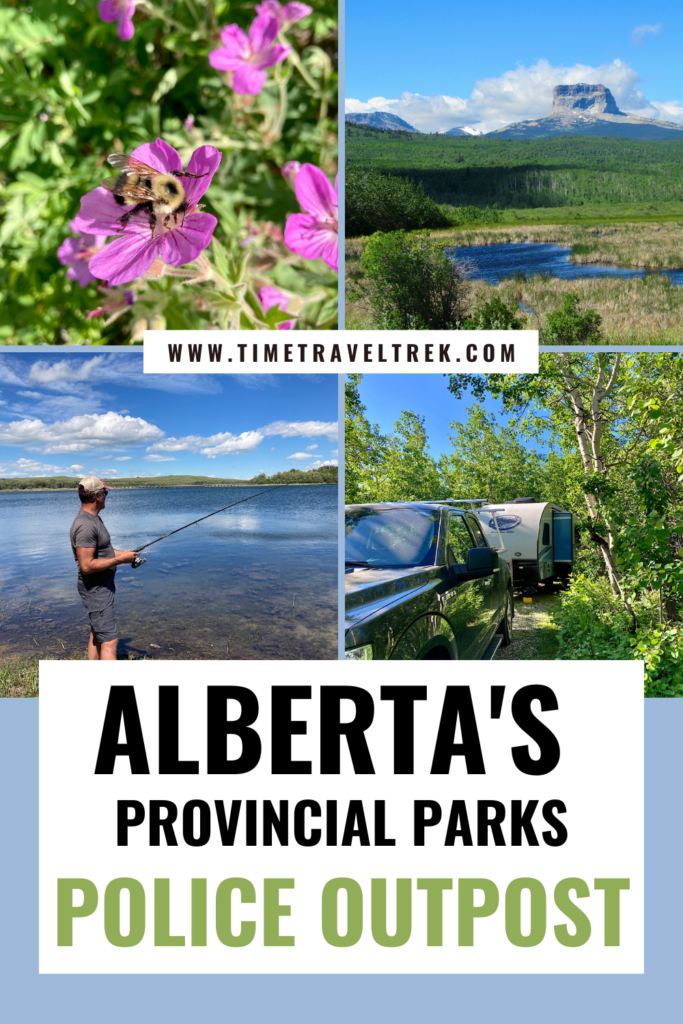
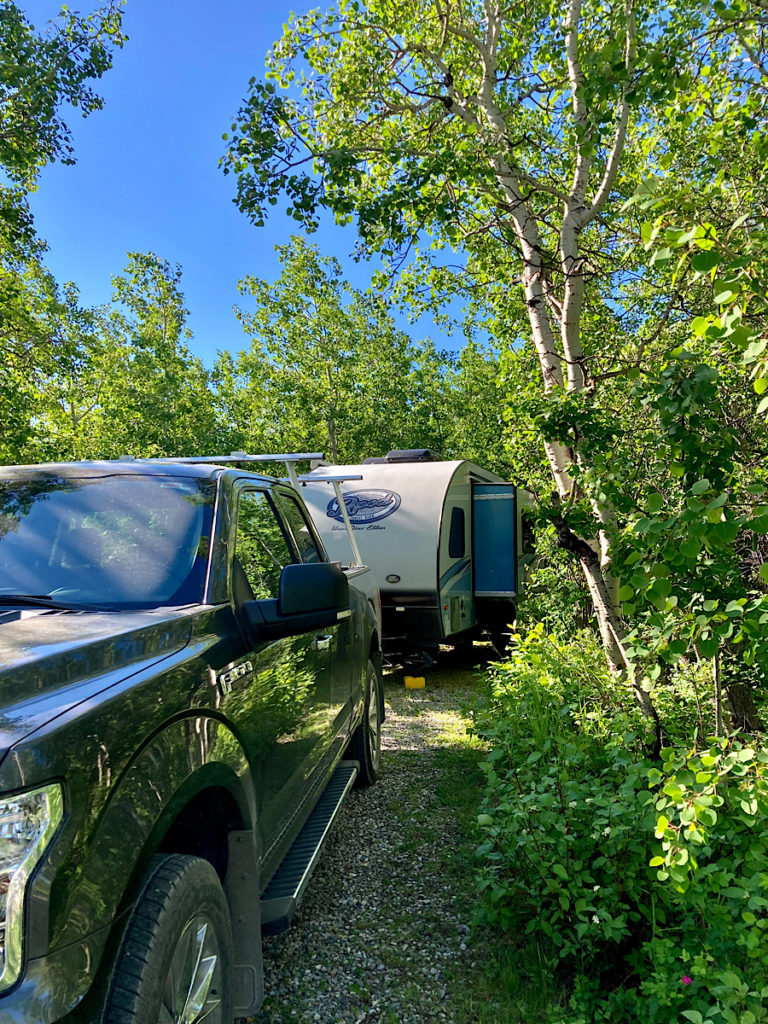
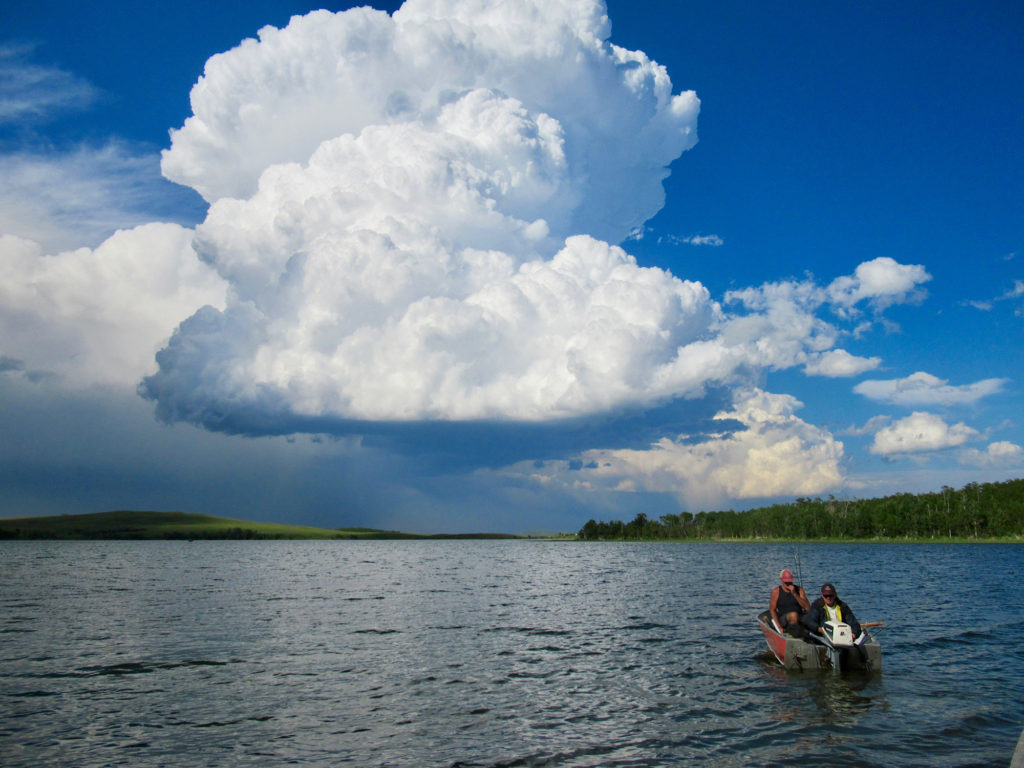
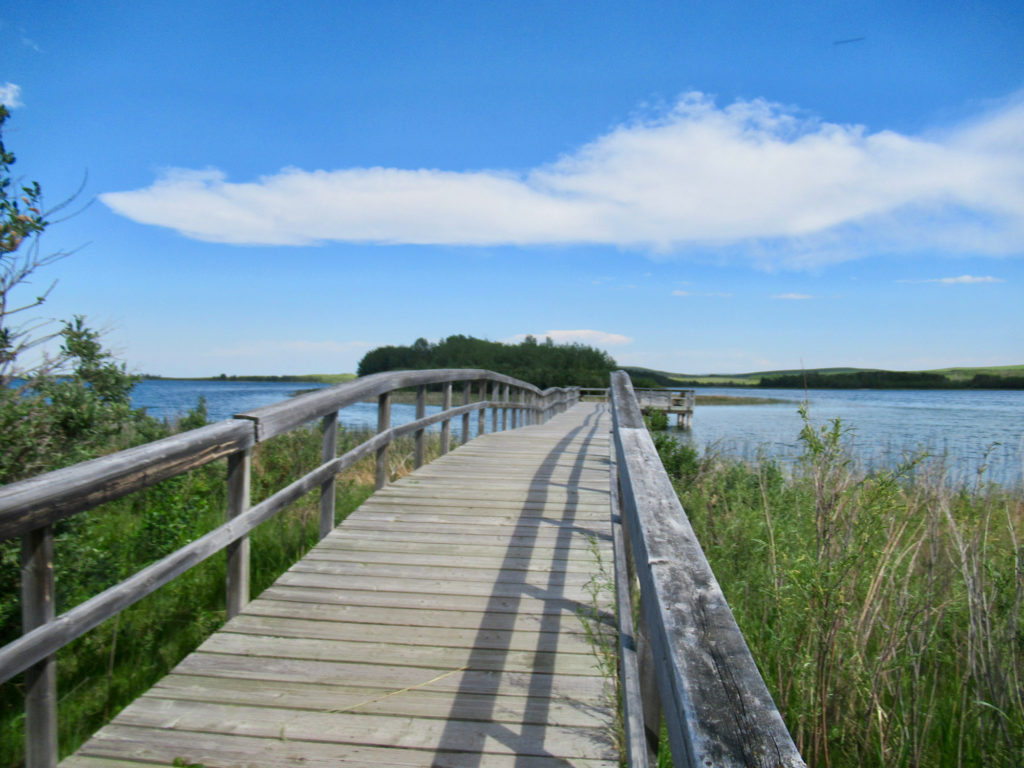
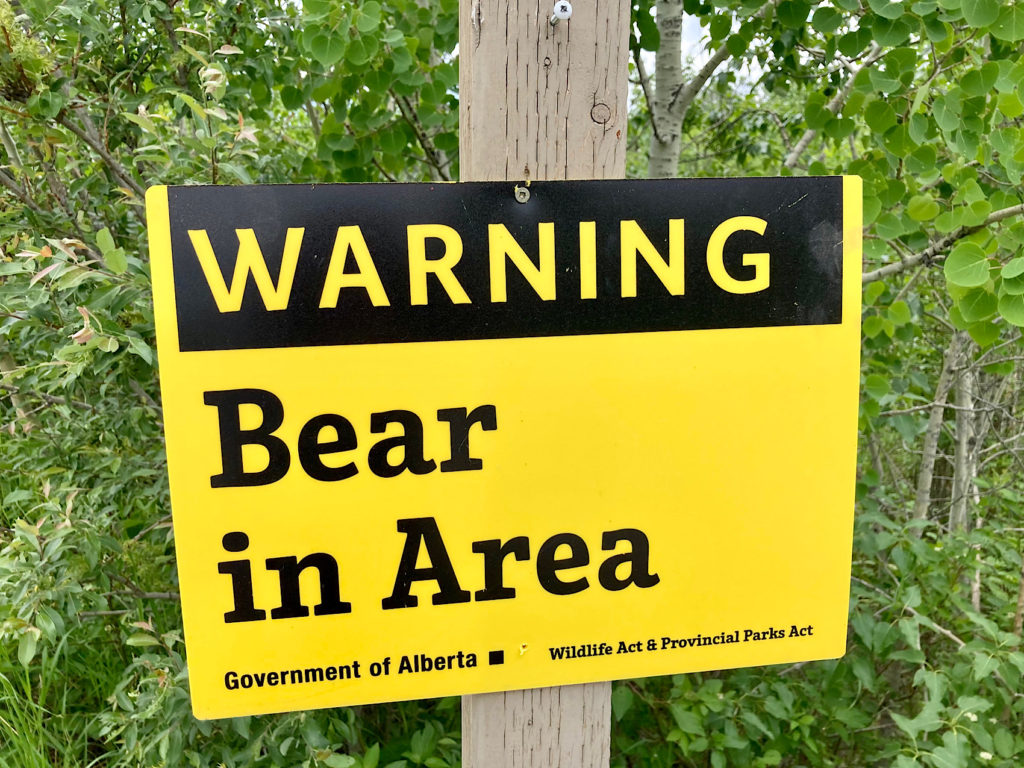
Hi
Im hoping we can see this special natural area. Your post is excellent and encouraging. I would like to know about the 23 km road, I realize it’s gravel of sort, but is it the gravel that will be hard on a car. I will be driving a SUV crossover but harsh gravel is not what I call a good time . We will be coming from Mountain View. Thanks for any response.
Irene
Hello Irene – the gravel road is a good gravel road. It’s easily navigable by a car.